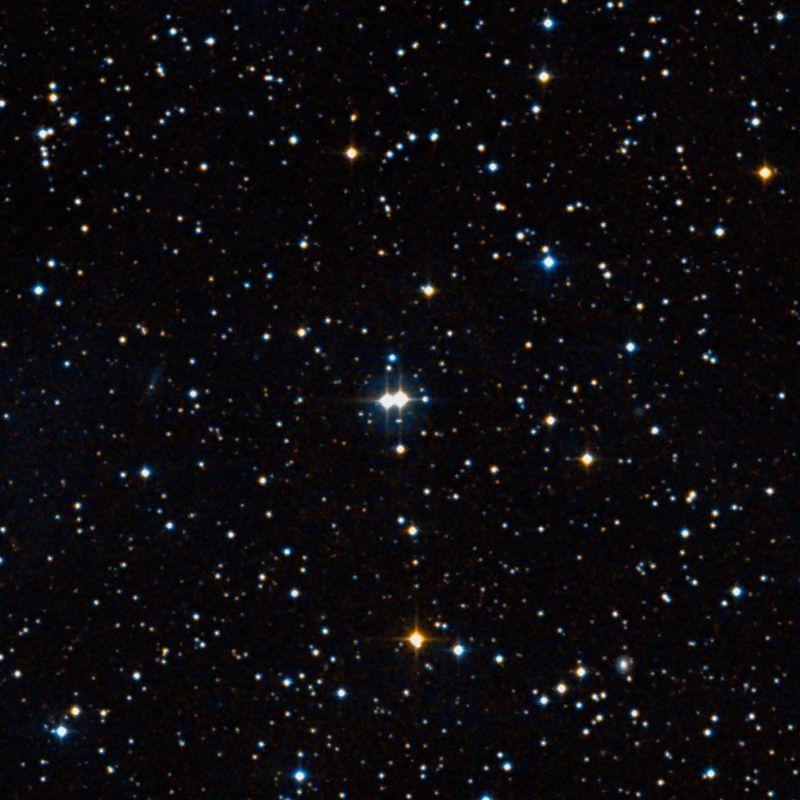Little Tycho Observatory
703 McNeill Road, Silver Spring, Md, 20910
rkk_529@hotmail.com
Abstract: A new double star has been found 15' from RZ Per, (1:29:42.1 +50:51:23.9, J2000) in PA 344°. A preliminary measurement of the new double gives 14" separation and a PA of 98 degrees, APASS visual magnitudes 10.3 and 10.6.
The pair was found while observing RZ Per, on 2013 Sep 14, at 3:22 Eastern Daylight Time. It was plainly seen in the 20cm Schmidt-Cassegrain telescope that was in use at the time. A quick check with the Night Assistant program1 revealed that the stars were in the UCAC42, Tycho3, and AC20004 catalogs, but not in the Washington Double Star catalog (WDS)5.
The pair's J2000 coordinates are: 01:30:24.16 +51:09:53.5.
Information about the find was first posted on the Cloudy Night's Double Star observing forum 6. Two of the observers there immediately responded the author with more data about the star. David Cotterell of Toronto, Ontario7 found the pair in the Millennium Star Atlas8. Wilfried Knapp suggested that the proper motion of the stars be examined.
Further study was done using the Aladin program9, which gave the UCAC4 designations of the two stars:
More designations can be found in the SIMBAD10 database.
The UCAC4 proper motions of both stars were also given, in miliarcseconds per year:
William Hartkopf, of the USNO11, points out that these are very small proper motions, and will require further study before the pair can be labled a common proper motion pair with confidence. He adds that the fact the pair has similar magnitudes and spectral types makes it more likely that the pair is physical.
The pair has been entered into the WDS under designation 01304+5110 TVB 1, and the pair has been verified in the UCAC4, 2MASS, Tycho-2, APASS, and the Washington Fundamental Catalog.
Below is a photo of the new binary from the DSS as rendered by WikiSky12. The scale is 14x14 arc minutes; north is at the top.

The author wishes to acknowledge the editorial assistance of David Cotterell, William Hartkopf, and Kathleen Bryant in making this short paper more readable.
1) http://observethestars.sourceforge.net/
2) Zacharias, et al, 2012. http://www.usno.navy.mil/USNO/astrometry/optical-IR-prod/ucac, The Fourth US Naval Observatory CCD Astrograph Catalog (UCAC4)
3) E. Høg, et al, 2000. http://www.astro.ku.dk/~erik/Tycho-2/, The Tycho-2 Catalogue of the 2.5 Million Brightest Stars
4) Urban, S. E.; Corbin, T. E.; Wycoff, G. L., 1997. http://adsabs.harvard.edu/abs/1998yCat.1247....0U, The AC2000 Catalogue
5) Brian D. Mason, Gary L. Wycoff, William I. Hartkopf, Geoffrey G. Douglass, and Charles E. Worley, 2001. http://ad.usno.navy.mil/wds/, The Washington Double Star Catalog
6) http://www.cloudynights.com/ubbthreads/postlist.php/Cat/0/Board/double
7) cotterell_david51@yahoo.ca
8) Sinnott, Perryman, 1997, Millennium Star Atlas
9) http://aladin.u-strasbg.fr/
10) http://simbad.u-strasbg.fr/simbad/
11) william.hartkopf@usno.navy.mil. Astrometry Department, U.S. Naval Observatory 3450 Massachusetts Ave, NW, Washington, DC 20392
12) http://www.wikisky.org/